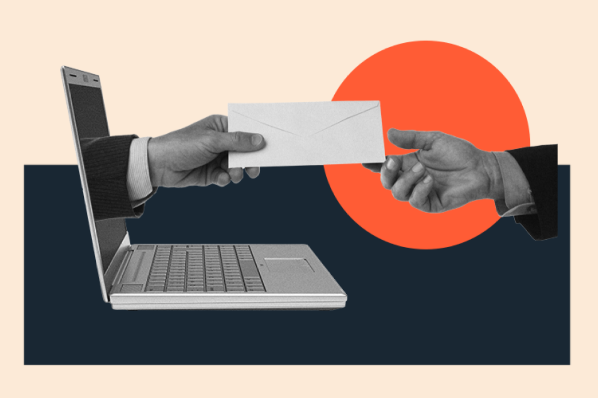- What is customer adoption?
- What is the customer adoption process?
- How to Track Customer Adoption
- What is a customer adoption rate?
- How to Boost Customer Adoption
What is customer adoption?
Customer adoption is the end-to-end process of launching a new product or feature, driving awareness of that feature, and integrating it into the customer’s workflow. Customer adoption also refers to the rate at which current customers adopt or purchase new products, features, or services, and how quickly customers can adapt to using that product or service as intended.
Essentially, the customer adoption process refers to the steps required for a customer to learn about a new product or service, express interest in it, evaluate and test the new offering, and then finally adopt it into their life or workflow. That could be by purchasing it or using it.
This is akin to the buyer’s journey in marketing and not too dissimilar from the product life cycle — but for customer success teams, it's known as customer adoption.
Understanding your company’s unique customer adoption process is critical to ensure your team provides the right support at the right time. For example, the type of service a customer needs in the awareness stage is different from what they’ll need at the adoption stage.
Plus, I’ve found that separating the stages of the customer adoption process can empower customer service teams to provide early adopters with specialty service and other perks or incentives.
As Lisa Dietrich, co-founder of meal prep service RemoteCanteen, explains, “Companies often face the challenge of getting their users to adopt new products. To increase the chances of success, it’s important to understand the different stages of adoption and what strategies, tools, and processes can be used to move users through each stage.”
Below, I’ll examine what a typical customer adoption process looks like, before diving into the tactical strategies your team can take to improve customer adoption rates for your business.
What is the customer adoption process?
There are five stages to the customer adoption process:

1. Product Awareness
The first stage of customer adoption is awareness. This is when a new or current customer becomes aware of the new product or feature, whether through their Customer Success Manager (CSM), a product notification, or a marketing email.
2. Product Interest
In the second stage of the customer adoption process, a customer expresses some form of interest in your product or service. If they’re a member of your current customer base, they might reach out to their CSM and indicate that they’re interested in trying the new feature.
3. Product Evaluation
After expressing interest, the customer will generally want to evaluate the new product or service. In this stage, they’ll consider whether it's something they want or need, as well as whether it’s something they are willing or able to actually spend money on.
4. Product Testing
Next, the customer will test your product or service in some way. Beyond a high-level evaluation, product testing refers to engaging in activities such as signing up for a free trial, joining a beta test, watching a demo or tutorial, and/or reading reviews.
5. Product Adoption
Finally, product adoption refers to the moment that a customer finally decides to make a purchase. To use the product to its full potential — that is, to use it in the manner in which it is intended to be used — they might need high-touch customer support from their CSM.
There might even be a formal onboarding process involved. Once this is complete and the product is integrated into your customer’s day-to-day life, you've reached customer adoption.
How to Track Customer Adoption
Of course, understanding the customer adoption process is just one piece of the puzzle. To make sure customers are making it through the whole process and actually adopting your company’s new products or features, it’s important to build systems to help you track and improve your customer adoption rate.
Tracking the right customer adoption metrics will help you and your team ensure the customer adoption process is smooth and predictable. These metrics will also help you identify signs of renewal and churn (before they happen), and they’ll make it possible to identify trends and determine where in the adoption process customers might be getting tripped up.
For example, you might discover that people are failing to adopt your new products because they’re too complex. Alternatively, you may notice that customers who use certain features on a weekly basis usually renew, or that those who stop using certain features are likely to churn soon.
Your customer success team can use this information to provide better customer service and maximize the chances that the customer adoption process goes well, ensuring that customers get the ROI they expect from your products or services.
Content marketing specialist Levi Olmstead illustrates the importance of identifying the most relevant customer adoption metrics for your unique environment, noting that adoption is “measured after a user performs a certain action. However, that action varies from platform to platform. The action should show that the user is getting value from your product.”
He continues, “Setting your product adoption benchmark to be a behavior beyond just signing up helps you track clients getting real value from your product.”
Olmstead highlights that measuring customer adoption will look different in different organizations. As such, it’s important to think carefully about the metrics that most closely correspond to value-add for your unique customers.
What is a customer adoption rate?
Before we can measure our customer adoption rate, we have to understand what it is. Put simply, a customer adoption rate is the number of customers who have adopted the new product or feature divided by the total number of customers.

For example, if you launch a new feature and 250 of your current 1,000 customers adopt it, that means you have a 25% adoption rate.
To calculate your customer adoption rate, you‘ll need to first define what an “adopted user” is, as this can change depending on the product or service you’re releasing.
In addition, alongside customer adoption rates, there are two other relevant metrics you can consider tracking: You can measure how long it takes users to begin using a new feature (time to first action), as well as the time it takes for a customer to get value from a product (time to value).
Once you’ve determined how to measure your customer adoption rate, it’s time to start taking action to improve it. Here are some tips and tricks that I’ve found can go a long way in boosting customer adoption and ensuring that your customers get the most out of every new product and feature you launch:
How to Boost Customer Adoption
- Conduct beta testing.
- Learn from feedback.
- Reach out to loyal customers.
- Improve the customer experience.
- Be strategic about your onboarding process.
1. Conduct beta testing.
If you‘re thinking about rolling out a new product or feature, it’s important to start by conducting a beta test. Beta testing means making the new feature available just to a limited subset of your customers, rather than releasing it to your entire customer base all at once.
This will allow your customers to learn how the feature works in action, and it will also give you and your team the chance to gather feedback and work out the kinks before fully launching the new product or tool.
In her comprehensive guide to beta testing, Rachel Go, Director of Marketing for the ecommerce company MyFBAPrep, highlights the power of an effective beta test.
“This phase is crucial,” she argues, “as it ensures your final product meets the needs and expectations of its target audience so you avoid a poor launch that misses the mark. Beta testers help by identifying bugs, providing honest feedback, and highlighting ways to fine-tune the product’s features and functionalities.”
2. Learn from feedback.
Of course, beta tests are only useful to you if you’re able to effectively learn from them. That means inviting feedback from customers — and taking the time to truly listen to that feedback.
As Go explains, a well-run beta test is “your chance to gather valuable feedback and insights to shape the future of your product.”
This can be as simple as asking customers to fill out a short survey after completing the beta test, in which they share what worked well, what they liked, and what they didn’t. Then, make sure that you and your team use that input to perfect the product before it’s officially launched.
3. Reach out to loyal customers.
Another way to increase your customer adoption rate is to proactively reach out to your most loyal customers. Consider giving these users a special offer or dedicated customer support channels in exchange for using your new product or feature.
After all, first-class service is the best way to convince existing users to continue working with your organization and adopting your new products or features.
4. Improve the customer experience.
It’s also important to remember that customer adoption doesn’t just hinge on having an excellent product — it also depends on a top-notch customer experience.
As marketing specialist Samantha Rohn explains, “ultimately, the most authentic way to increase customer adoption is to provide an excellent customer experience by providing a quality product.”
Your product or service needs to add value to your customers while also being intuitive and simple to use. With this combination of a quality product and a seamless customer experience, your customers will be that much more likely to adopt new features and tools as soon as they're released.
5. Be strategic about your onboarding process.
For some SaaS companies, a low-touch onboarding process can be effective. But if you’re looking to increase your customer adoption rate, you’ll want your highest-value customers to have access to a high-touch customer service experience.
This may mean creating customized onboarding documents, as well as giving personalized demos or tours of the new feature until it is fully implemented in the customer’s workflow.
Research shows that customer retention is critical to building and sustaining revenue — and ensuring customer retention is impossible without consistent customer adoption. Indeed, a recent report found that boosting customer retention by just 5% increases profits by an average of 25-95%.
To drive customers through your customer adoption process and keep them coming back for more, it’s critical first to understand what customer adoption is. Then, you’ll need to determine the best way to measure and improve your customer adoption rate.
Finally, success will only be possible if you and your team prioritize providing the world-class customer service experience that’s necessary to drive customer adoption for every new product or feature you release.
Editor's note: This article was originally published November 2021 and has since been updated for comprehensiveness.Customer Onboarding








![10 Customer Onboarding Challenges You Might Face This Year [+Expert Tips]](https://53.fs1.hubspotusercontent-na1.net/hubfs/53/ai%20customer%20service%20predictions%20(2).webp)

![Digital Onboarding: How to Make It Work For You [+ 5 Helpful Tools]](https://53.fs1.hubspotusercontent-na1.net/hubfs/53/digital%20onboarding_featured%20image.jpg)
![Perfect your customer onboarding with our expert tips [+ checklist]](https://53.fs1.hubspotusercontent-na1.net/hubfs/53/client-onboarding-best-practices-1-20251029-7553263.webp)
.webp)